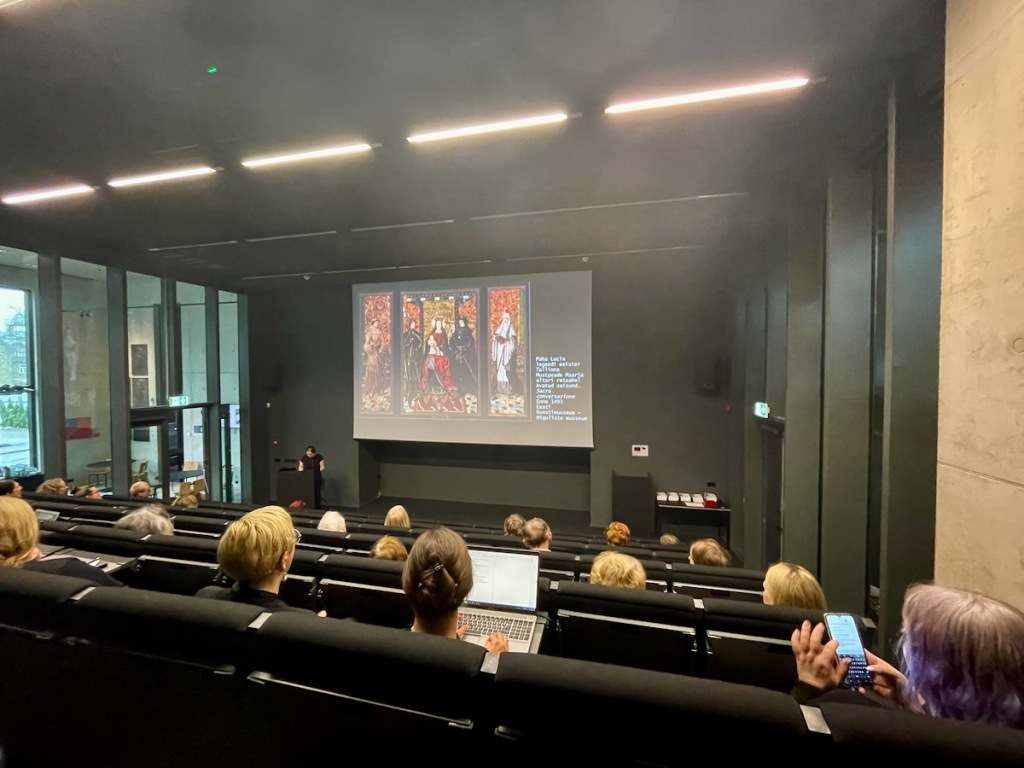Estonian art history is celebrating its centenary this year. On 8 and 9 April, the Estonian Society of Art Historians and Curators organised a two-day conference entitled “The Centenary of Estonian Art History. Institutions, People, Methods, Stories, Reception” in Tartu and Tallinn. Among the main organisers of the conference were Professor Krista Kodres, Estonian Academy of Arts, and Dr. Merike Kurisoo, chair of the Estonian Society of Art Historians and Curators.
On Saturday, the focus was on present day, i.e. the research and exhibition projects that are currently underway. Dr. Greta Koppel and Dr. Merike Kurisoo started the day by presenting the project Michel Sittow in the North? Altarpieces in Dialogue and it’s main research questions. Greta gave also an overview and comparison of the paintings of the Passion altarpiece and the Bollnäs Holy Kinship altarpiece, Merike presented the research history and current research status of the sculptures of the Bollnäs altarpiece.







The Art Museum of Estonia presented two other projects that day. Dr. Kerttu Palginõmm, also a member of our project, is currently preparing a research project Glory and Luxury in Tallinn: The Altarpiece of St Mary, which will start in the near future. The Kumu Art Museum, in collaboration with the University of Tartu, introduced the research and exhibition project Art or Science.
Our project Michel Sittow in the North? Altarpieces in Dialogue is closely related to the history and historiography of Estonian art history as well as to the historical connection between Estonian and Swedish art history. The first professorship in art history in Estonia was inaugurated at the University of Tartu in 1921. Helge Kjellin, a Swede, was elected the first professor and took up her post in 1922. As a student of Johnny Roosval, Professor Kjellin was a scholar of medieval art and architecture. He was one of the founders of the study of medieval art and heritage conservation in Estonia. His professorship was relatively short-lived (until 1926). The next professor of art history in Tartu was the legendary Swedish art historian Sten Karling, who taught in Tartu from 1933 to 1941. During his Tartu years, Karling wrote nearly 50 articles and books on medieval and early modern art and architecture in Estonia. Sten Karling became professor at Stockholm University after Johnny Roosval in 1947. His studies still form the basis of Estonian art history studies. Karling’s monograph in Swedish on Estonian medieval wooden sculpture (1946) was the first to point out the close similarity between the Bollnäs retable and the Tallinn Holy Kinship altarpiece (Brussels workshop, c.1500). Sten Karling’s 1937 manuscript “Tallinn. An Art Historical Survey” was published as a book only in 2006, but was known to Estonian art historians even during the Soviet period. Probably based on his collaboration with Paul Johansen, Karling refers there to Michel Sittow as the painter of the outer side of the wings of the Tallinn Passion altarpiece.










